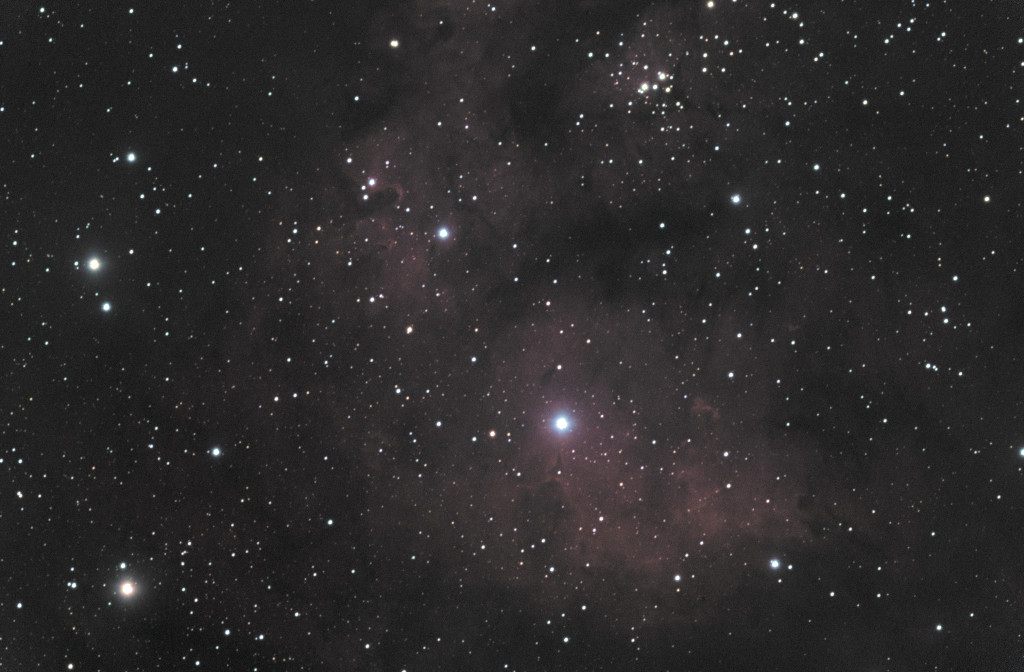Had a good clear night, this is with the ASI178MC running at gain 250 and no moon to get in the way.
Category Archives: Astronomy
Allsky Camera Upgrade
So I’ve upgraded the ASI120MC camera in the allsky kit to an ASI178MC
This is an upgrade from a 1.2 mega-pixel (1280×960) to a 6.4 mega-pixel (3096×2080) resolution. It’s a bigger sensor but with a smaller 2.4 micrometre pixel size. It also has a lower (1.4 – 2.2e) read noise compared with the ASI120MC (4.0 – 6.6e).
The first results are quite promising. The camera is certainly running hotter than the previous one.
I have also upgraded the indi-allsky software, and it now features a star-trail timelapse. It also has some interesting new features, which I have not yet worked out fully, so have not enabled them yet.
Here are the first video results:
I shall be testing the stacking features as well as the meteor / airplane detections. I have also applied a custom detection mask, which should improve various calculations and hopefully improve the results.
I have also re-aligned the overlay in the public website, which you can access here.
Kstars – HiPS DSS2 Offline Overlay
Some will know that with Kstars you can enable the HiPS Overlay to see a realtime representation of the sky. This has worked by querying online servers for sky image data, and usually this is the DSS2 (Deep Sky Survey) Color data.
Unfortunately until now, for this to work you will have needed to have Kstars with Internet access, although it did have some functionality to “cache” a certain amount of sky data.
As of version 3.5.9 of Kstars, it can now utilise DSS2 data offline, under UNIX this is from the /usr/share/kstars/HIPS folder.
The data you need is of varying resolution, with each order doubling the resolution (halving the pixel size).
| HIPS Order | Number of Tiles (~100KB each) | Tile angular size | Tile pixel angular size |
| 1 | 48 | 29.32° | 6.871′ |
| 2 | 192 | 14.66° | 3.435′ |
| 3 | 768 | 7.329° | 1.718′ |
| 4 | 3072 | 3.665° | 51.53″ |
| 5 | 12288 | 1.832° | 25.77″ |
| 6 | 49152 | 54.97′ | 6.442″ |
| 7 | 196608 | 27.48′ | 3.221″ |
Now, you may ask, how do you obtain the DSS2 files to populate in this folder?
I have created 4 torrents, one for HiPS Order 1-4, one each for HiPS Order 5, 6 and 7. You will notice that these increase in size by a factor of 4, with Order 5 being 845 Megabytes, and Order 7 being 17.70 Gigabytes.
Here are the torrents:
https://coochey.net/downloads/kstars-HiPS-Norder1-4.torrent
https://coochey.net/downloads/kstars-HiPS-Norder5.torrent
https://coochey.net/downloads/kstars-HiPS-Norder6.torrent
https://coochey.net/downloads/kstars-HiPS-Norder7.torrent
I would ask that if you download these that you assist with the seeding of them once they have been downloaded. Kstars is a small community and doesn’t have the resources to host these files anywhere else at present.
If you come looking for these files in the future, and the torrents appear to have died then message me and we can look to resurrecting them again.
The Digitized Sky Surveys were produced at the Space Telescope Science Institute under U.S. Government grant NAG W-2166. The images of these surveys are based on photographic data obtained using the Oschin Schmidt Telescope on Palomar Mountain and the UK Schmidt Telescope. The plates were processed into the present compressed digital form with the permission of these institutions.
The National Geographic Society – Palomar Observatory Sky Atlas (POSS-I) was made by the California Institute of Technology with grants from the National Geographic Society.
The Second Palomar Observatory Sky Survey (POSS-II) was made by the California Institute of Technology with funds from the National Science Foundation, the National Geographic Society, the Sloan Foundation, the Samuel Oschin Foundation, and the Eastman Kodak Corporation.
The Oschin Schmidt Telescope is operated by the California Institute of Technology and Palomar Observatory.
The UK Schmidt Telescope was operated by the Royal Observatory Edinburgh, with funding from the UK Science and Engineering Research Council (later the UK Particle Physics and Astronomy Research Council), until 1988 June, and thereafter by the Anglo-Australian Observatory. The blue plates of the southern Sky Atlas and its Equatorial Extension (together known as the SERC-J), as well as the Equatorial Red (ER), and the Second Epoch [red] Survey (SES) were all taken with the UK Schmidt.
All data are subject to the copyright given in the copyright summary. Copyright information specific to individual plates is provided in the downloaded FITS headers.
Supplemental funding for sky-survey work at the ST ScI is provided by the European Southern Observatory.
Scientists and educators conducting research, teaching, or other non-profit activities may use data from the copyrighted collections freely and without restriction, other than that users are requested to acknowledge the source of the data in any publications resulting from that use.
Commercial, for-profit use of the copyrighted collections is prohibited without written permission from the copyright holder(s). Contact archive@stsci.edu for details.
Allsky Timlapse 2022-05-05
Set up the camera for the first time in a while. Probably need to redo my darks though.
All Sky Camera #7
I have finally changed the overlay on the all sky camera to match (somewhat) the orientation of the stars for when I place it. I guess this improves the educational value of the system.
There are a few improvements left to do, some of these will obviously depend on budget:
- Waterproofing.
- Better Camera.
- Better Lens.
- Permanent location.
All Sky Camera #6
Well, we still have some issues with the Moonmode deactivation in the software. I’ve upgraded the firmware on the camera and am in discussions with the backend developers about where the bug might lie. It is possible that we may just disable the transition into and out of Moonmode to get over the bug.
Here is a timelapse from last night, unfortunately, the moon is in direct view for most of the night, so gain setting had to be set low to avoid over-exposure.
All Sky Camera #5
So – the new INDI AllSky backend is now up and running. Running outside in an ambient temperature of around 11 degrees C. The sensor appears to be stable at 19.2 degrees C. So hopefully the resistors will keep the dome above dew point.
I’ve managed to, at least, get the live image uploaded from the new backend to the coochey.net website, so you can still view the live view here.
We will see whether the videos / startrails & keograms upload properly, although I suspect that I will have to re-apply some of the sealant.
I will also have to re-do all the dark frames again, I may sort that out this evening.
All Sky Camera #4
So, I left it running overnight, and we hit some issues. Thankfully it was mostly dry, but there was a lot of dew.
I have now mounted 4 100 ohm resistors within the dome, and attached them, in parallel, to the 3.3V line on the Raspberry Pi. It should give me 0.43W of heat to the dome area. They’re connected to a breadboard, so I can easily disconnect one of the resistors if it gets too hot, or I can move to the 5V line on the Raspberry Pi for 1W of heat.
I’m unsure if there was just too much water, or if I was out of focus or something, or perhaps seeing overnight just wasn’t any good.
I’m also unsure about the handling of the ASI120MC-S camera by the allsky software. It could be that I need a better camera (this is the cheapest you can get really). So an upgrade to something like an ASI178MC or ASI178MM might be in order.
One thing I will be trying now, is to use my USB 500GB SSD drive, with a new install of Raspberry OS Buster (10), and try out the indi-allsky web package. It may allow me to change some settings that are not functioning ideally on the standard allsky package. Of course, this change will probably mean the Allsky camera website will not be updated in a while until I fix things to upload properly.
All Sky Camera #3
Equipment has been drip feeding to complete a build. I’m currently testing powering the Pi4 and the ZWO camera via a SkyWatch 17mAh PowerTank. I am hoping that this would allow me to run the All Sky camera for a whole night without needing mains power.
Items I have:
- CCTV clear dome
- Some Steel brackets
- Various M3, M4, M6 Nuts and bolts
- A 12V –> 5V 3A USB power converter
- Various Cables
- Pi4 4GB
- ZWO ASI120MC-S
- Cigarette Lighter 12V Power plug & cable
Items I’m waiting on:
- PVC Junction Box (hopefully arriving today)
- Power Connector Strips (collecting later)
- Holesaw Kit for my drill (collecting later)
- Cable Glands for sealing the power lead (arriving tomorrow)
Hope to get an initial build done over the weekend..
Some initial test show that:
- Current ambient temperatures allow for enclosed operation without the need for any additional cooling.
- The PowerTank can probably last 24 hours without needing a recharge.
Just one hole so far needed into the junction box. Hopefully the last one.
All Sky Camera #2
I have some issues, as we’re running inside the conservatory there are reflections whenever the inside lights are turned on. Also some graininess with the ASI120MC camera, so switching to mono Y8 mode for future acquisitions. I will also stop saving daytime images (live daytime view still available), but the daytime images are not useful for me for keogram / startrail or timelapse videos really.

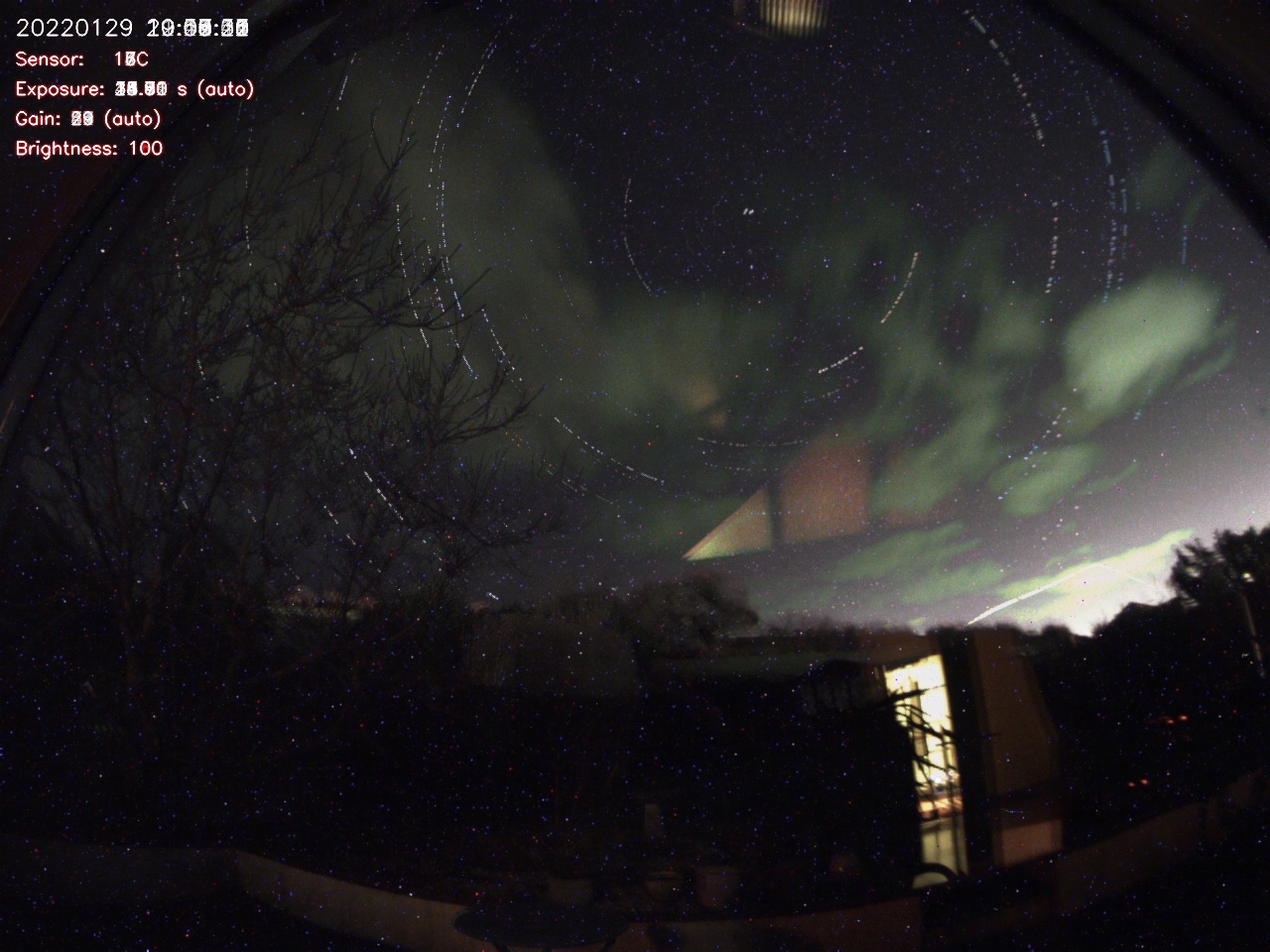
All Sky Camera
I’m going to be tinkering with my old ASI120MC mini as an All Sky Camera, currently just have it indoors and looking out the conservatory.
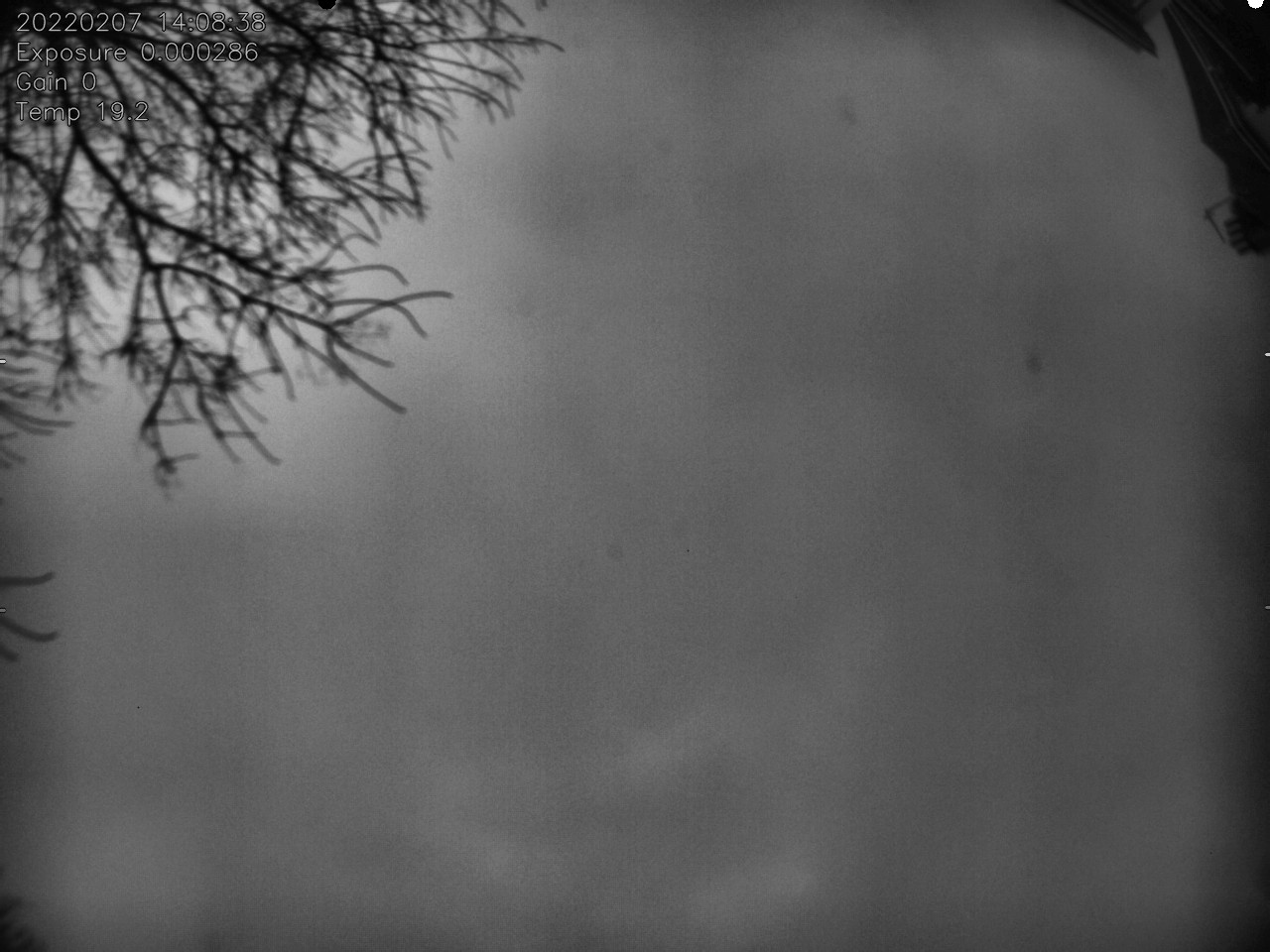
We have some clear skies forecast for tomorrow night, so may see if I can mount it outside.
The sub-website for the All Sky Camera can be found here. It will take some tweaking to get everything functioning correctly. Very much still in testing at the moment.
I’m ordering a weather proof junction box, an acrylic clear dome and some miscellaneous parts to house the system so that it can be mounted outside to get a fuller view of the sky. I will probably be putting the camera in monochrome as well, as the pictures can be a bit grainy when in colour.
The software runs on the Raspberry Pi, and some methods to build a similar project can be found in and around here.
Hosting the Kstars Handbook
I’ve decided to build and host the kstars handbook on my site, mostly for my own benefit, as when I tend to look for this online I tend to find out of date version.
My own version can be found here.
I’ll try and update it from git from time to time.
DX Express Service
I ordered some photo items from a supplier, and the supplier sent these via a courier “DX Express”, I had heard of DX, I think through having had some third party experience where they’re the preferred supplier for the couriering of legal documents etc…
Not been too impressed, still not received the goods, and their tracking information appears to show that the items have been traversing the local area for a couple of days, so not really making much of an attempt to deliver, but rather continue to risk damage rolling across the Devon hills.
Here is the latest on their tracking page:

Hopefully, third time lucky, otherwise we will rename DX (Delivered Exactly), to DXWWCBB (Delivered Exactly When We Can Be Bothered).
Update: They did finally manage to deliver on the 9th December.
M42 – Orion Nebula
Had a go at the orion nebula yesterday. First outing in a long time, just 30 x 5min exposures, with some Ha. Here is the first stab:
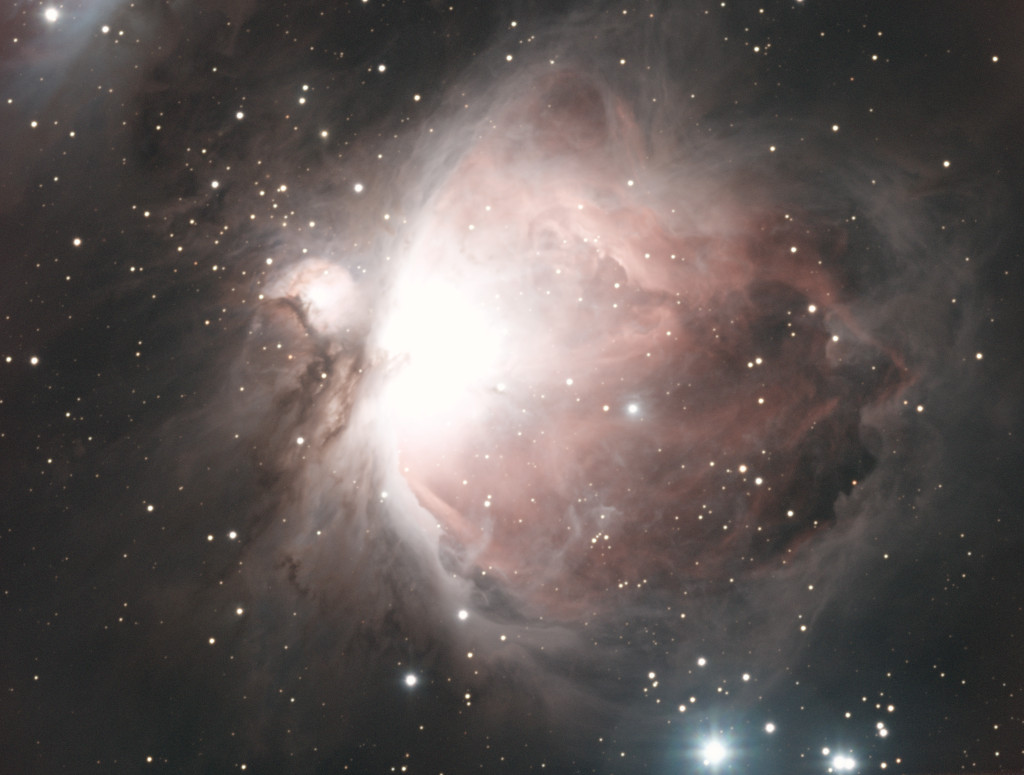
After a day or two, I decided to look again, and see what we can pull out of the data. Two and a half hours of capture roughly equates to about 1 Gigabyte, so there is a lot that can be done. Here is the final that I will settle with on this acquisition:

(11395) 1998 XN77 / HIP 12148 event on 2021 Dec 16, 21:18
It has been a while since posting anything. It has been unfortunate that the weather has just not been amenable to allow for any serious amount of viewing.
However, things may change, and the new moon approaches on the 4th December where I will have some spare time to take advantage if the clouds do clear.
I do, however, appear to be in a lucky location for an event that will happen on the 16th December. The 67.3km diameter asteroid, designated (11395) 1998 XN77, which orbits between Mars and Jupiter, will occult a visible star (magnitude 5.5) in the Cetus constellation (HIP 12148).
If the weather is dry and clear then I might be able to set up the telescope and camera to track HIP 12148 and take a video to see this “mini-star eclipse”.
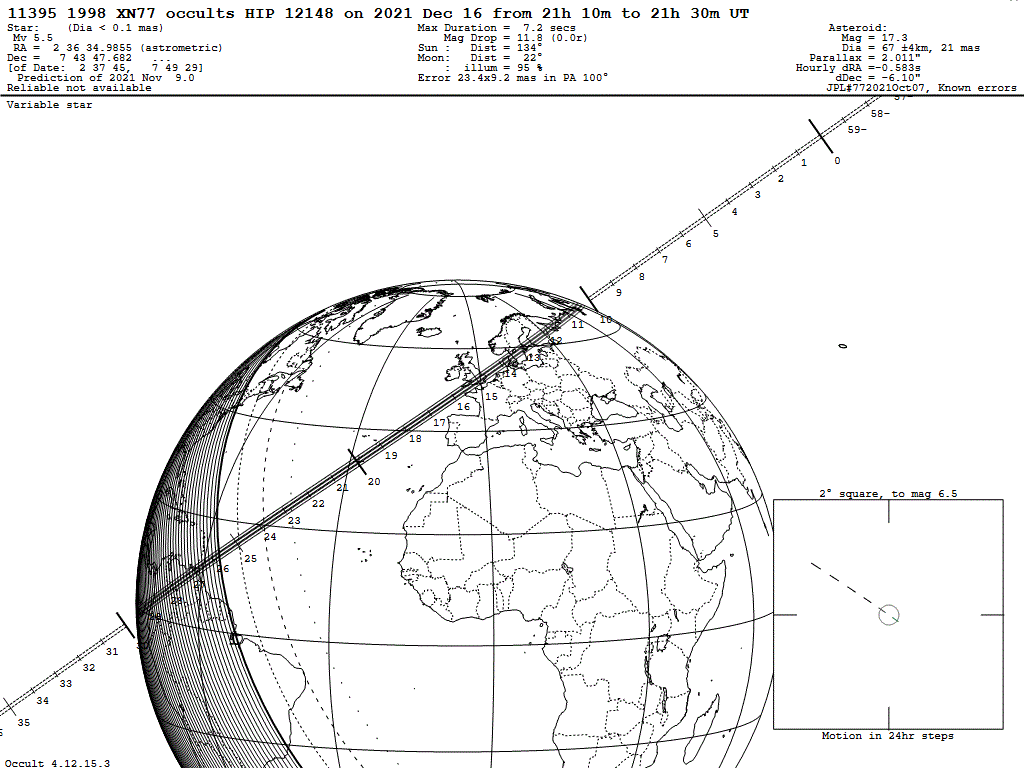
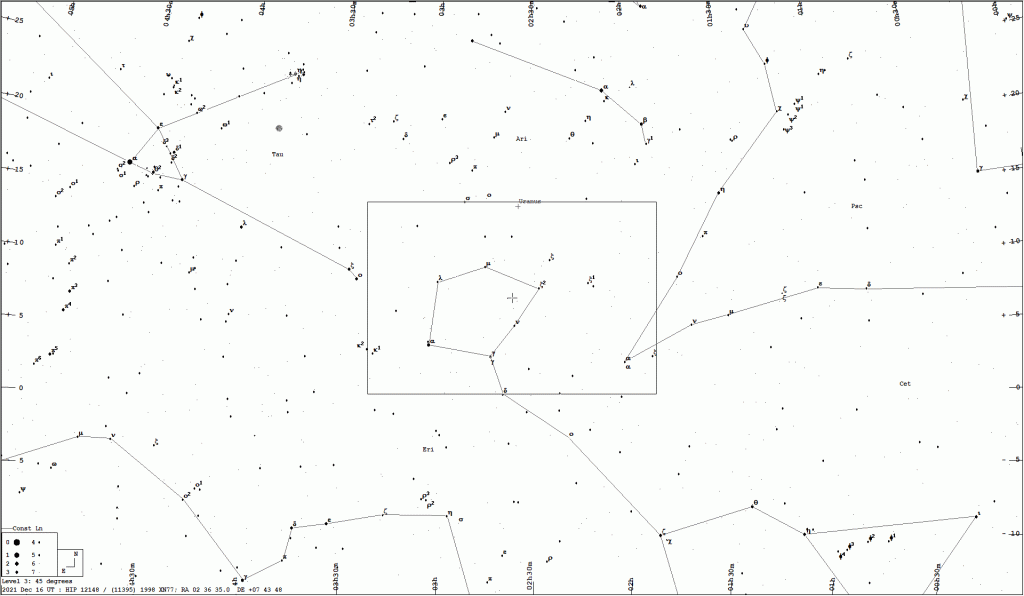
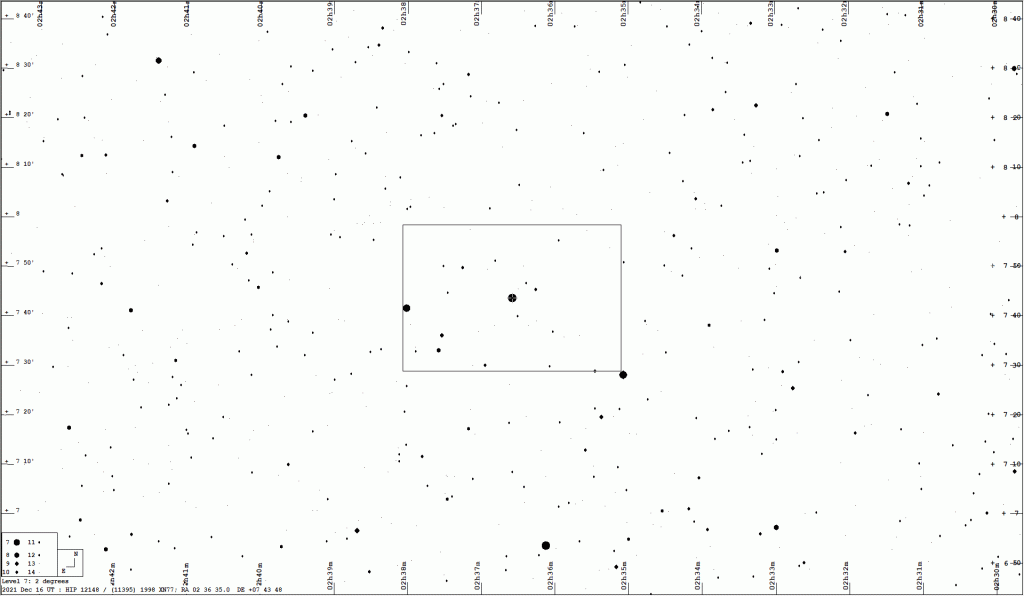
The event at a glimpse
* date and approx. time of event: 2021 Dec 16, 21:10 - 2021 Dec 16, 21:29
* geocentric midpoint of event [JD]: 2459565.38883333
* magnitude of target star: 5.50
* magnitude drop [mag]: 11.76
* estimated maximum duration [s]: 7.210
* Moon: 95 % sunlit, 22° distance
* Sun: 134° distanceNGC7822 Continued
More NGC7822
I have been continuing to get data for NGC7822, although I’m yet to obtain quite a few narrowband subs as yet, so we’re not seeing quite the detail or colour I would like. I also think I will have to increase the length of my narrowband subs.
Anyway, here is another integration result, with still minimal post-processing as there isn’t much point working on the data too much until I have a full set and can start discarding the sub-optimal exposures.
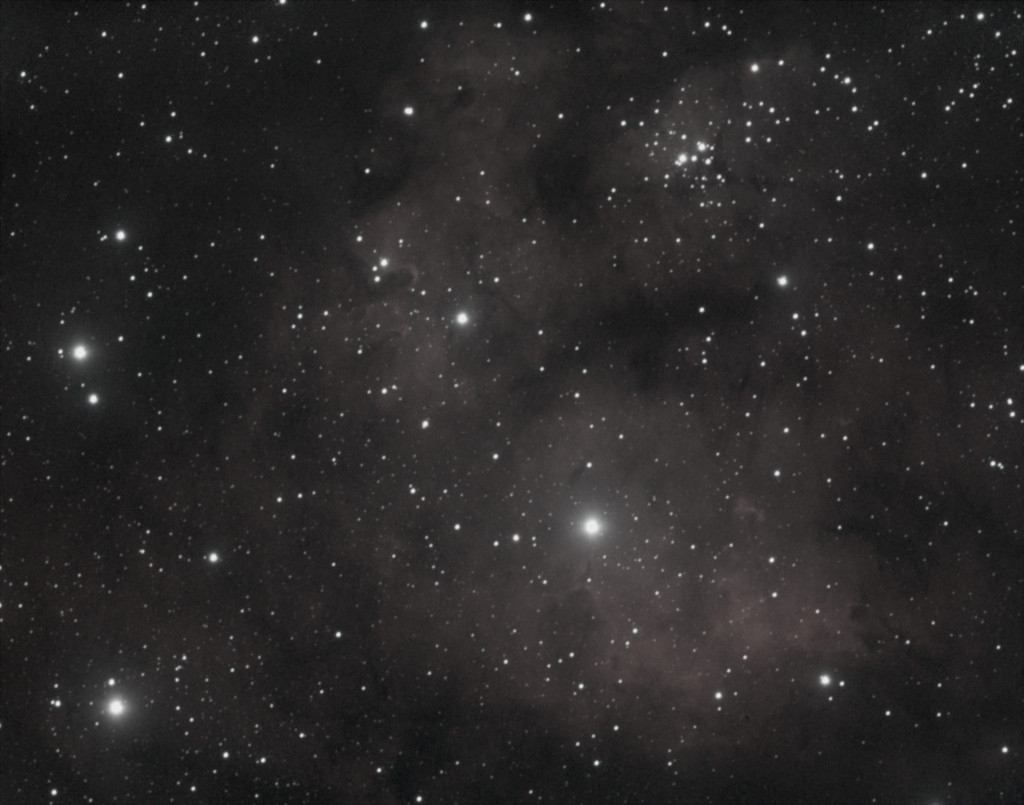
Experimenting and NGC7822
I’ve been experimenting with the new set up, and what with the weather there are a lot of software changes to account for.
The following is an image of NGC7822, a random target that I’ve put on while I run through bugs and problems, mostly arising from lack of having been able to regularly use the equipment due to the current weather.
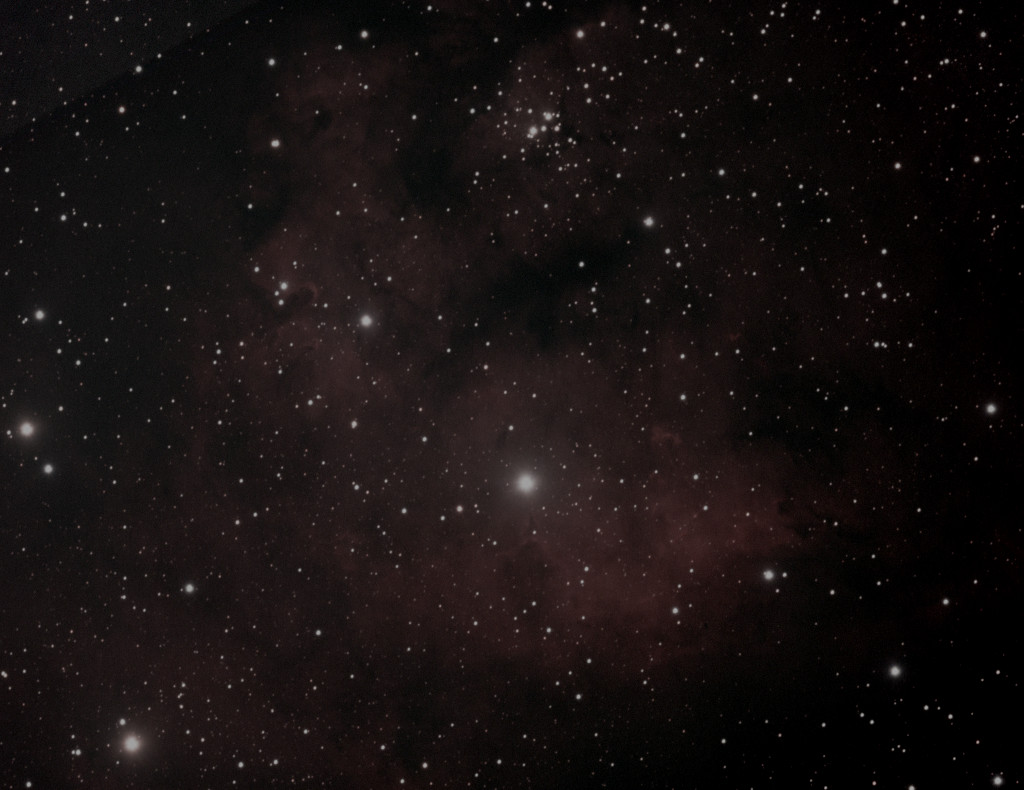
I’ve not bothered too much with post processing, just a quick, mostly automated workflow, and then quick levels adjustment with Gimp.
Perseverance Landing
This is truly captivating.
Perseverance Rover approaching Mars
The Perseverance Rover will attempt to ‘softly’ land on Mars later today. This is a routine that’s been tried in many ways and unfortunately has only had around a 50% success rate. Of course, we hope that through past failures we can achieve future success.
Here are the Live Feeds for the landing, which starts around 1915 UTC.
And, here is the uninterrrupted clean feed:
